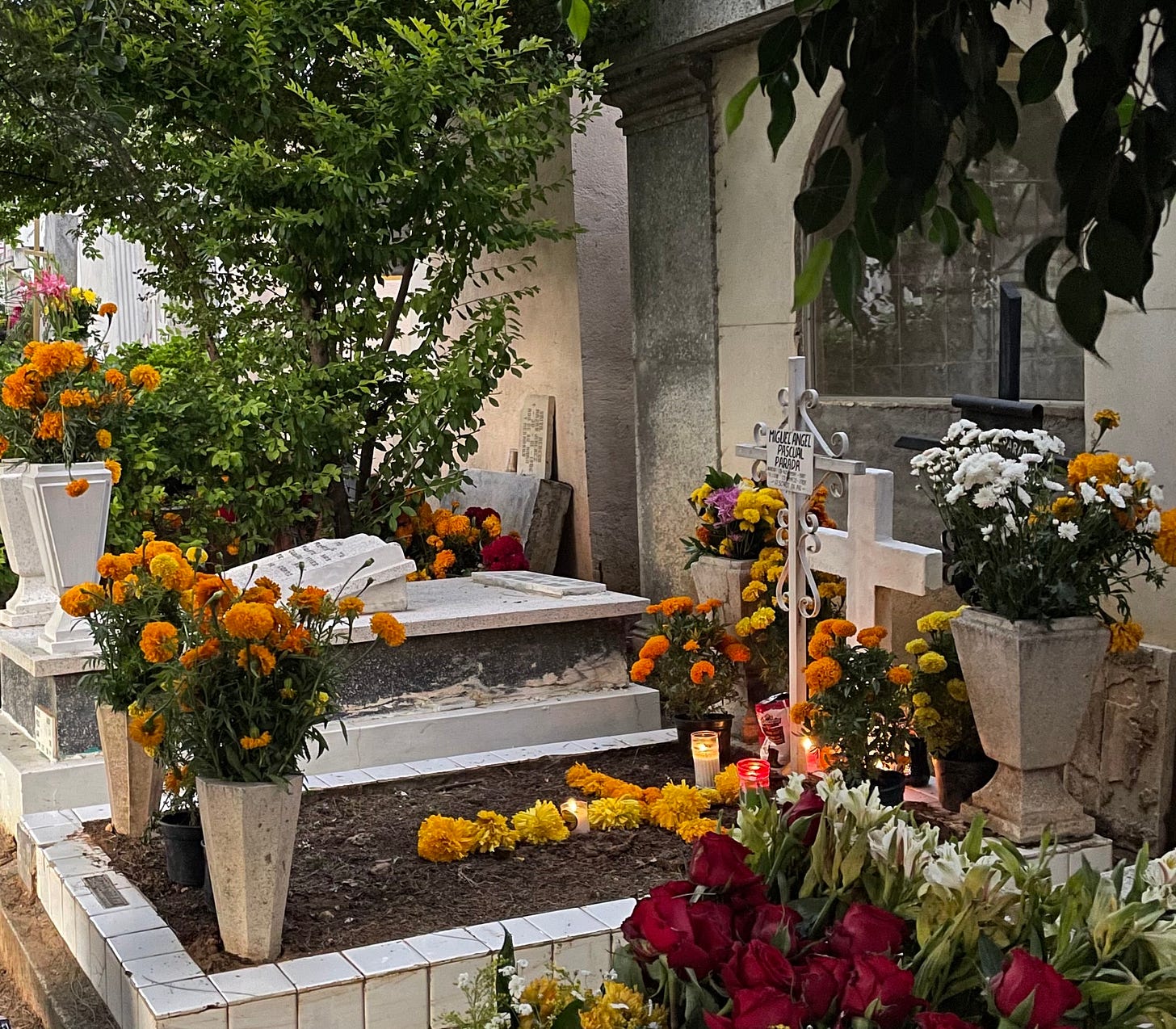How differently she must see the world
Field Notes from Luca Soldovieri's current exhibition
Luca Soldovieri [link]
Open it Like a Letter, Read it Like a Window
Olga Korper Gallery [link]
22 March - 26 April, 2025
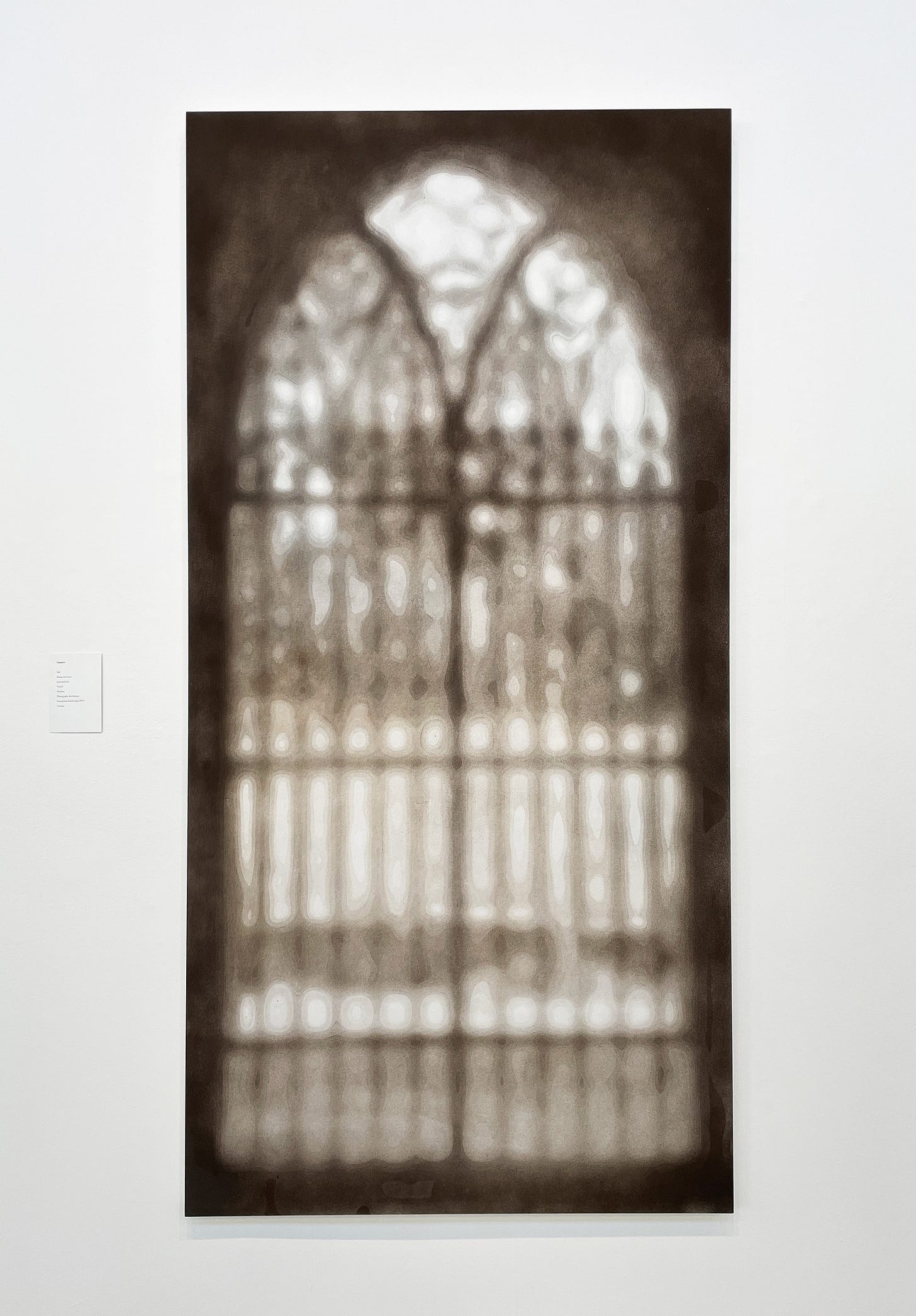
✎
I was reading an article by Erik Hoel, fantastic writer, which introduced the concept of macroscales. A term describing the reductions in granularity which we rely on to understand the world. From an unknown source (god?) → spontaneous movement of molecules → pressure differentials → wind → the phenomenon we call weather. I don’t know if that’s actually how weather works, but that’s exactly the point: I don’t have to. Abstraction upon abstraction until we have something we can comfortably grasp. To be exposed to the underlying minutiae would paralyze us.

✎
Or, perhaps, the minutiae could be a tethering force. A meditation that works for me is to stare at something for a while and take mental notes of what I see, down to the smallest details. No embellishment, I simply take stock of the objects or details — exactly like the notes that are included alongside each piece in Luca Soldovieri’s show. After some minutes of doing this, not only is my mind softened, but the space I was looking at is perceptibly altered. The exercise keeps familiar places alive and interesting. I guess this is the process all artists are engaging with, to some extent.
✎
Someone must be responsible for monitoring and documenting the ephemeral.
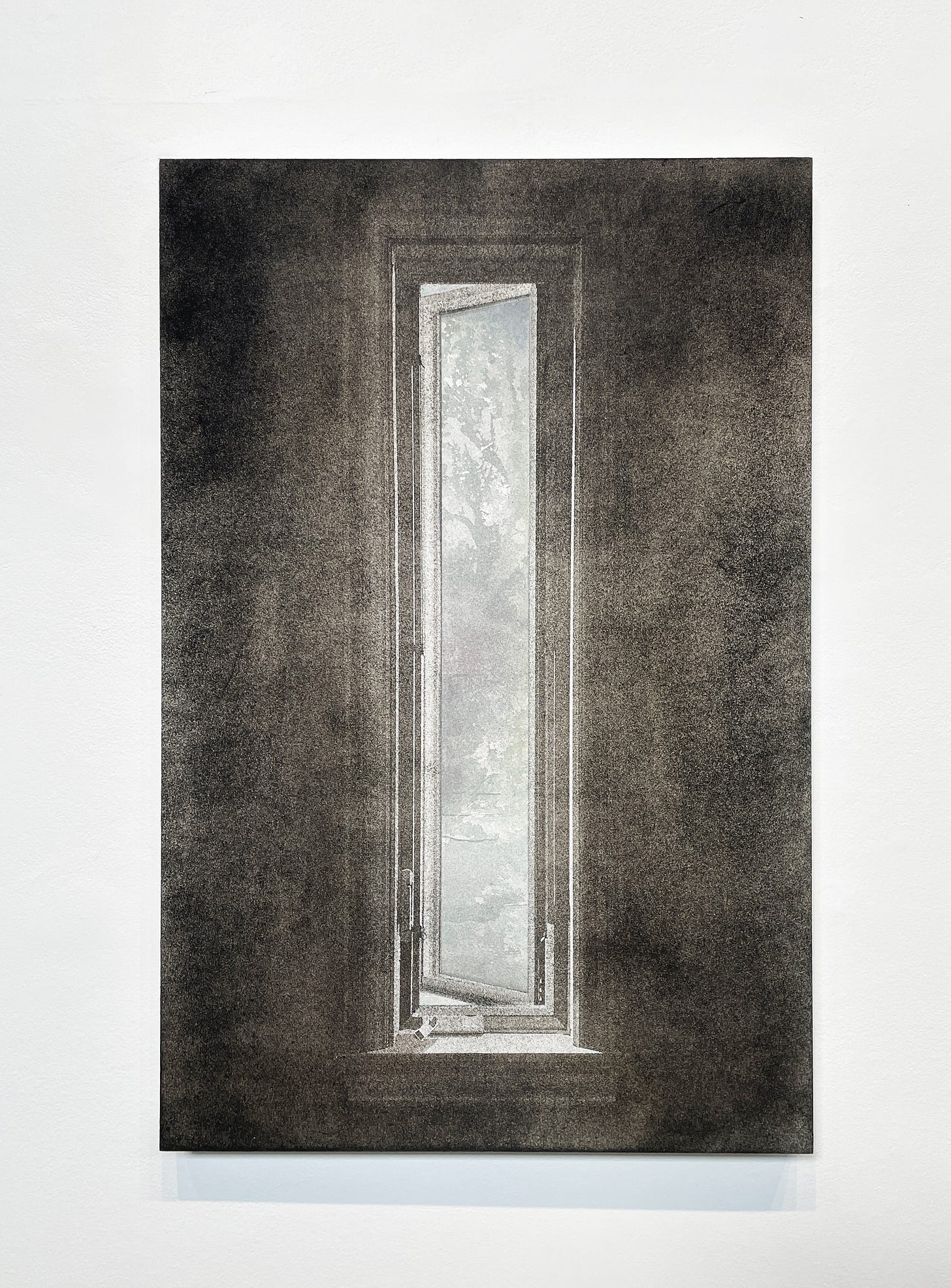
✎
The lists of media credited in the artwork descriptions are unlike any I’ve seen: clover, garden bench, rain boots, moth, speedometer needle, receipt for ½ dozen tulips. Each material is ground into powders by the artist, which are then used as a pigment of sorts, to create the illustrations upon wood panel. No matter how captivating the finished compositions (and they are), they feel secondary to this underlying inspiration, which is infinite. How differently she must see the world.
✎
The finished pieces feel like weatherbeaten monuments, captured in the grainy monochrome or sepia tones of a film camera. If the selection of materials was intuitive, the compositions feel deliberate and carefully conceived. I believe the powders are sprinkled on top of stencils designed by the artist. Pulling off those stencils must be terrifying and satisfying.
✎
The artist’s Instagram is also satisfying. It contains many examples of the inspirations behind, and the collection + storage + documenting of, her source materials.
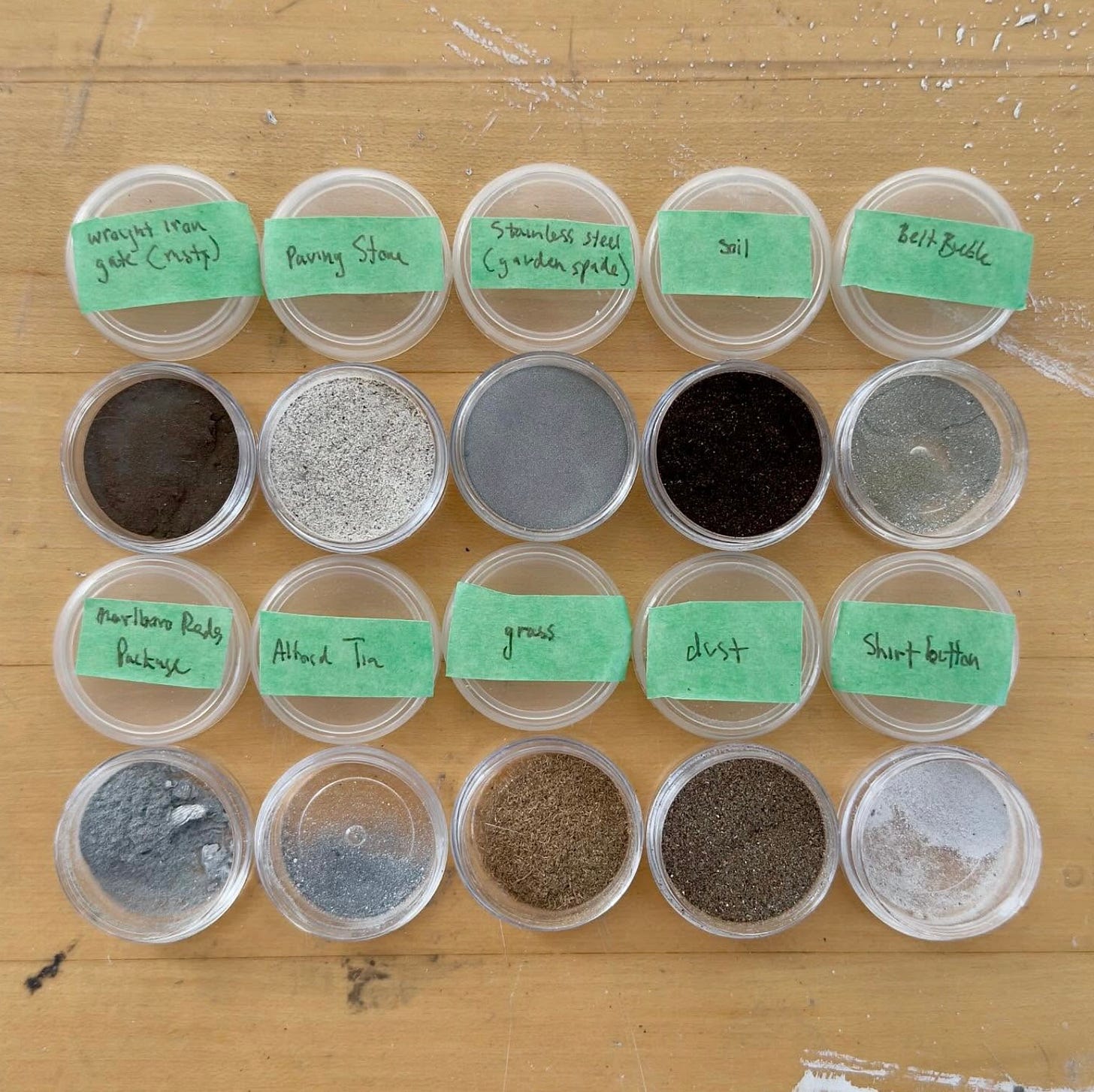
✎
I live in Toronto and am not a millionaire, which means that my house is old. No matter how regular my vacuuming, or my reminders to replace the furnace filter and clean the ducts, a fine layer of dust rests permanently on every surface. This becomes a big problem for me around 10am, when the sun hits my patio windows and lights up all the speckles. Perhaps my favourite thing is when my Dyson’s dust trap becomes full, and I eject its contents into the garbage. A small victory in a war I am doomed to lose. Perhaps I would benefit from adopting the artist’s relationship to fine particles.
✎
It’s springtime, I am waiting for the rain to clear the salt off the street. I’m waiting for a construction project next door to finish, so dirt doesn’t blow in my eyes when I sit on my patio. My story collection is coming along: 10 pieces are ~95% done, but the final ~5% of each remains out of reach. Probably because it doesn’t exist. I am nonetheless waiting for the crumpled edges of each story to sit flat, and then for the stack of papers to resemble the work of a professional, whatever that means. I know that if I keep waiting for finality, nothing will ever happen.

✎
We are an export nation, we take raw materials and send them to other places to become refined products, and then we buy them back. Chunks of ore go somewhere and come back as MacBooks. We are reckoning with this through the lens of economic frailty, but there is also a cultural lens to consider. What happens to a culture when we have no human connection to the objects that make up our lives, when so few of them are nurtured by its people? Canada’s culture already feels like a void. And now we have to reckon with this question, too, through the lens of AI.
✎
What am I rambling about? We take too much stock in the refined, finished product. When we move into a new home, we cannot wait for it to feel “completed”, despite knowing that it never will be. Soldovieri, conversely, takes finished things, perhaps meaningful ones, and returns them to dust. It’s a commitment to the in-between, Making a monument out of process. The artistic intuition to own something from start to finish. This often begins with forceful dismantling.
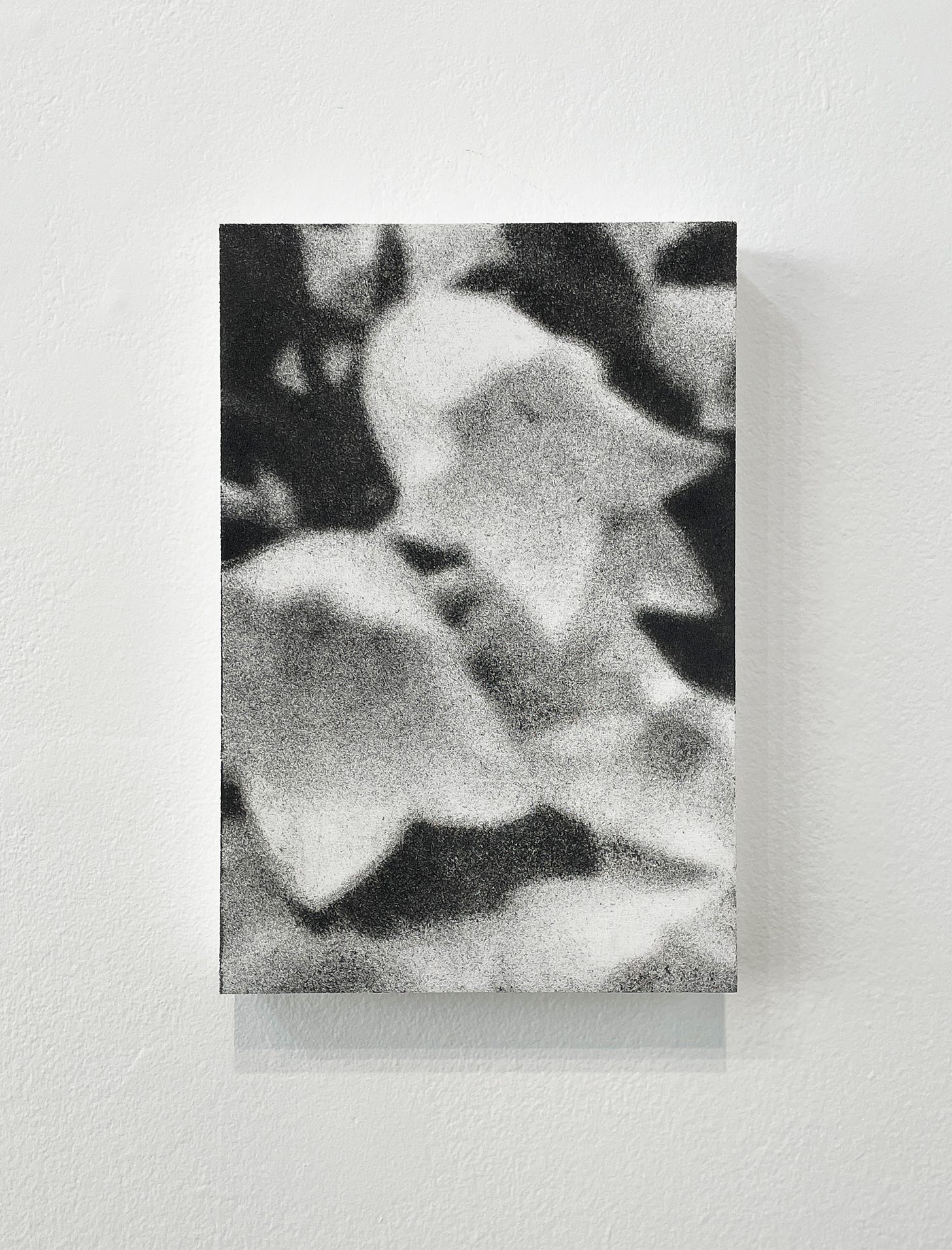
✎
During Día de los Muertos, the channels between the living and the dead are said to be reopened. Families and friends return to the graves of loved ones for a celebration. One tradition is to leave the deceased’s favourite objects, food, and drinks by the grave. A deck of cards, a bag of chips, a bottle of mezcal.
✎
I recently watched La Chimera, a fantastic film about Italian grave robbers taking treasures from Etruscan tombs. The movie casts them in a romantic light, but of course, we consider their trade to be deplorable. Why? I think from a contemporary view, it’s not because we wish for the dead to be left alone. Or because we worry they are interfering with the divine. It’s because they are stealing from history. They are preventing archaeologists and historians from accessing objects which are essential to understand the past, which tether us to history. Of course, we neglect, in our own day-to-day, that the objects we purchase, utilize, dispose of, are the very same pieces of history. Each a little monument that will greatly outlive us.



